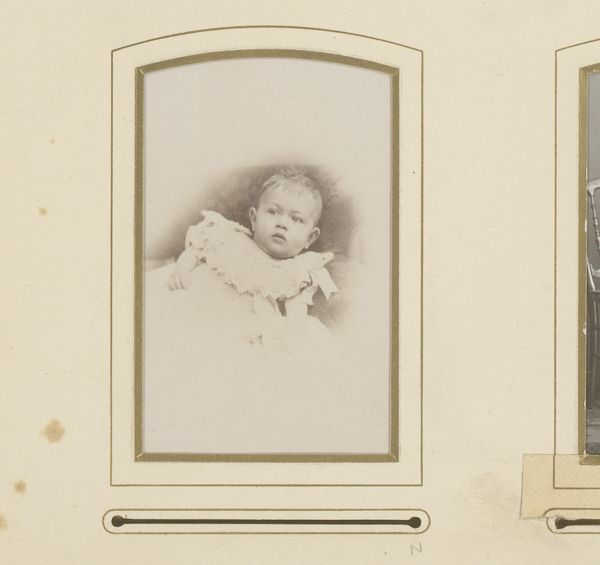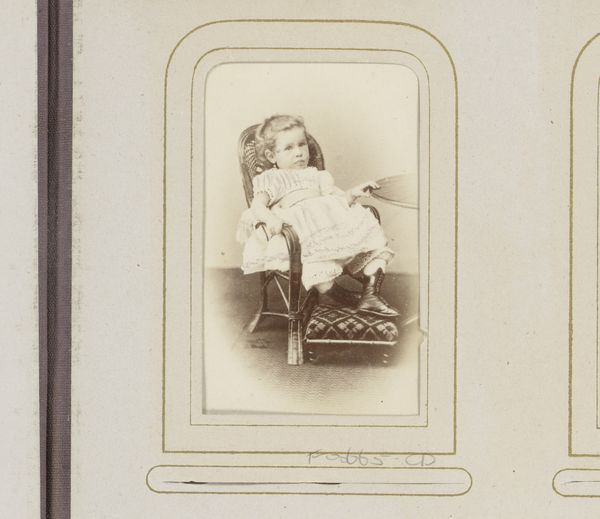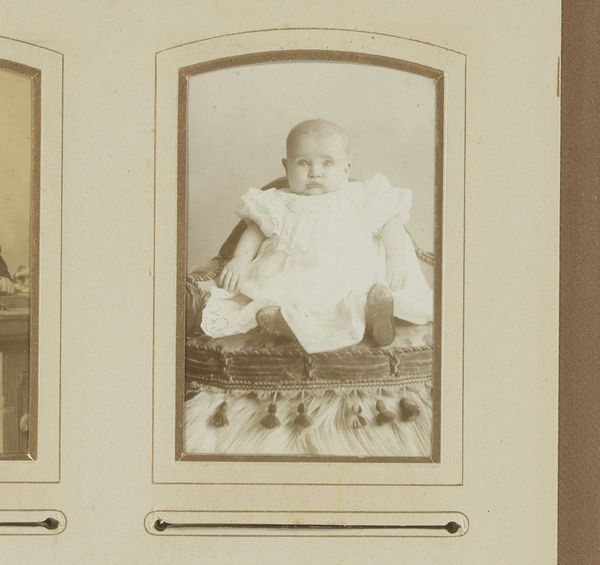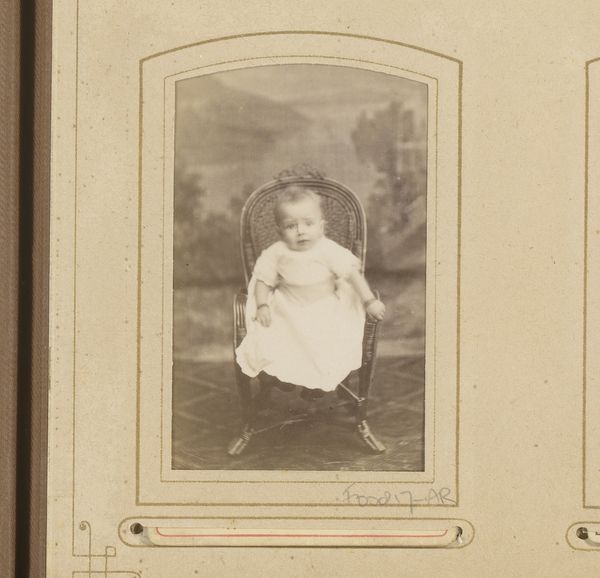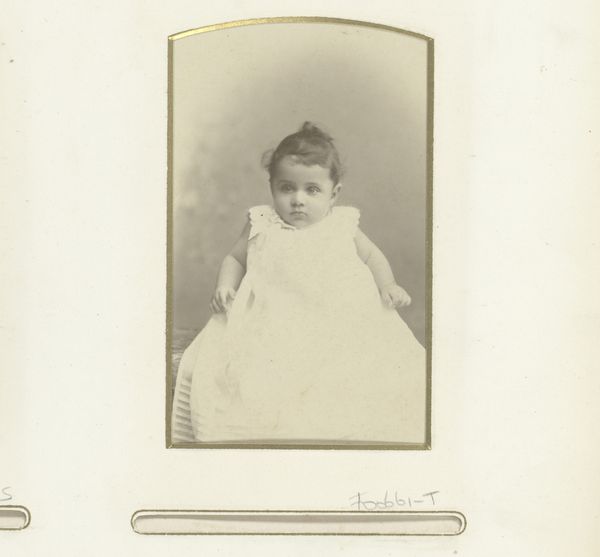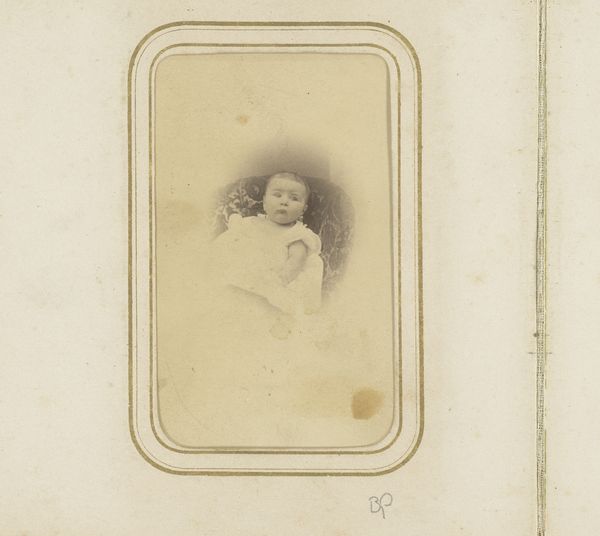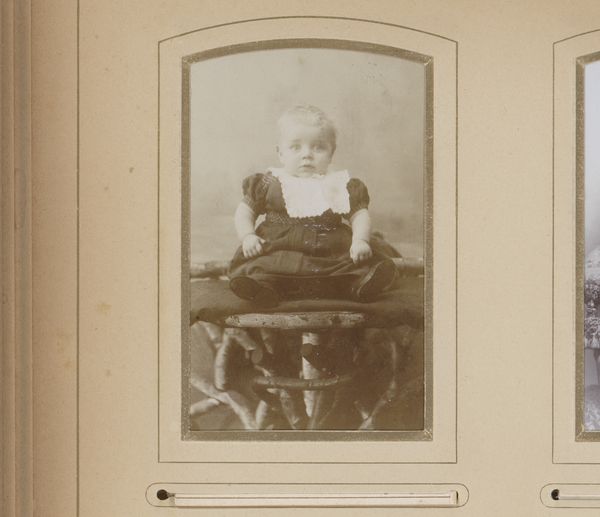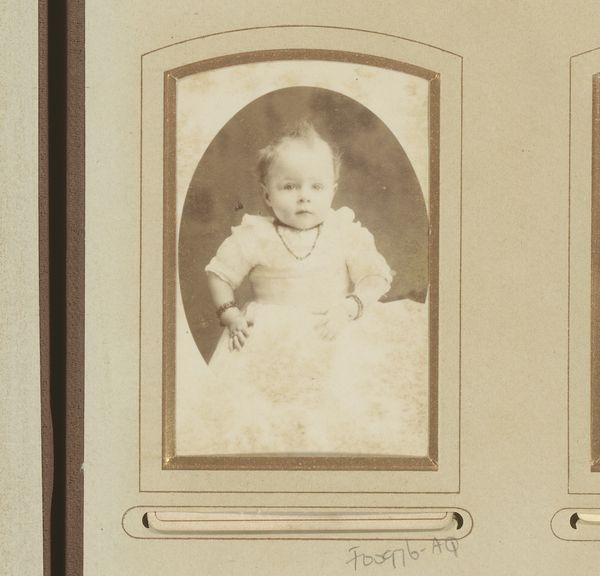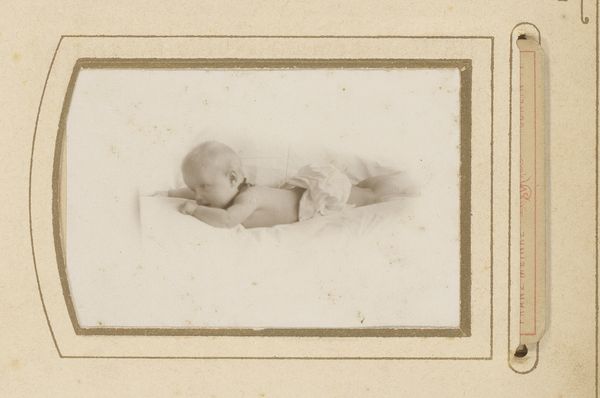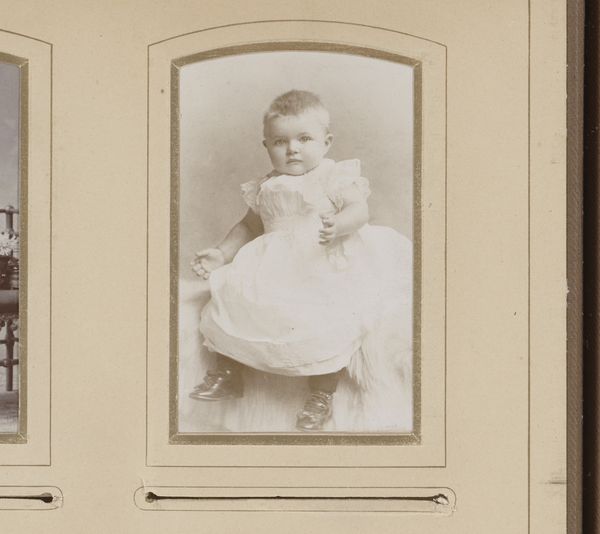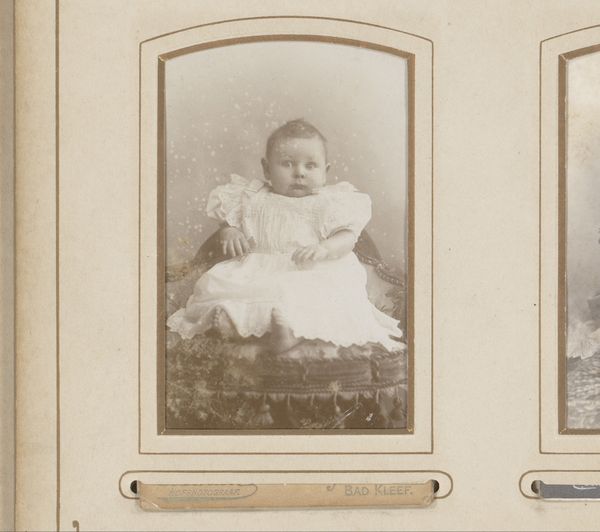
photography
#
portrait
#
still-life-photography
#
pictorialism
#
charcoal drawing
#
photography
#
historical photography
Dimensions: height 87 mm, width 53 mm
Copyright: Rijks Museum: Open Domain
Editor: This is "Portret van een baby" or "Portrait of a Baby" by Jacobus Johannes de Haan, dated sometime between 1892 and 1930. It's a black and white photograph that has a very soft, almost dreamy quality. How do you interpret this work, especially given its historical context? Curator: That "dreamy quality," as you call it, points directly to Pictorialism, a movement in photography that sought to elevate the medium to fine art through painterly effects. Now, consider the late 19th and early 20th centuries. What does a staged portrait of a baby, meticulously arranged and softened, say about societal expectations surrounding infancy and motherhood at that time? Editor: It seems to romanticize the experience, focusing on purity and innocence. Was this an accurate reflection, or more of a constructed ideal? Curator: Exactly! It’s a construction, deeply tied to bourgeois values. This photograph serves as propaganda by representing idealized infancy during this period. How might viewing this image through a contemporary lens challenge those traditional representations and offer a different understanding of care and the family? Editor: It definitely prompts a dialogue on representation, gender roles, and the social expectations placed on women and families. Curator: Precisely! It’s not just a picture of a baby; it's a snapshot of societal expectations, anxieties, and aspirations frozen in time, begging us to engage with their historical contingency. Editor: That's given me a lot to think about—seeing beyond the surface image to its deeper cultural significance. Thanks! Curator: Indeed. Considering the social history transforms a sentimental snapshot into a powerful lens for critical inquiry.
Comments
No comments
Be the first to comment and join the conversation on the ultimate creative platform.
